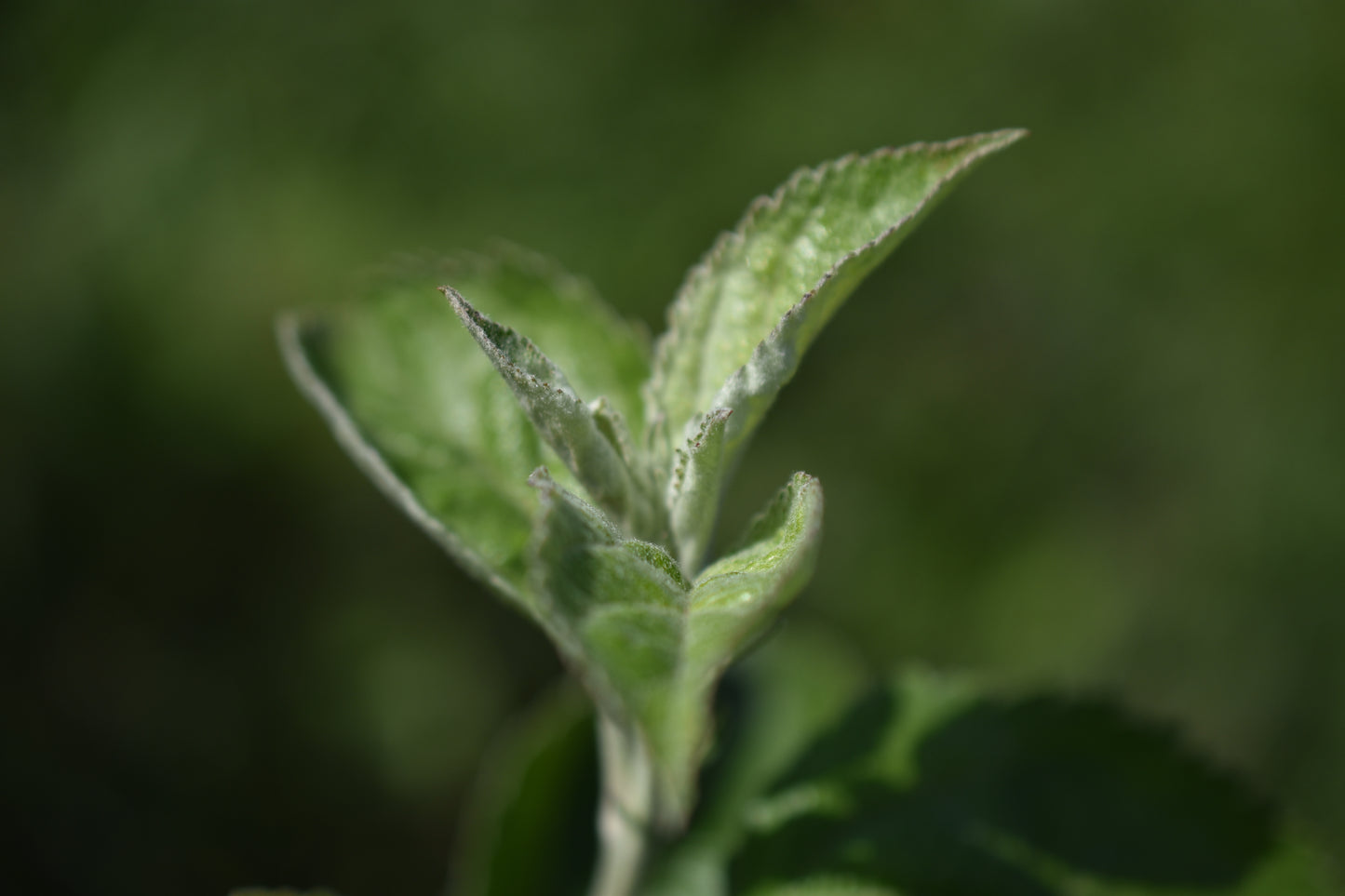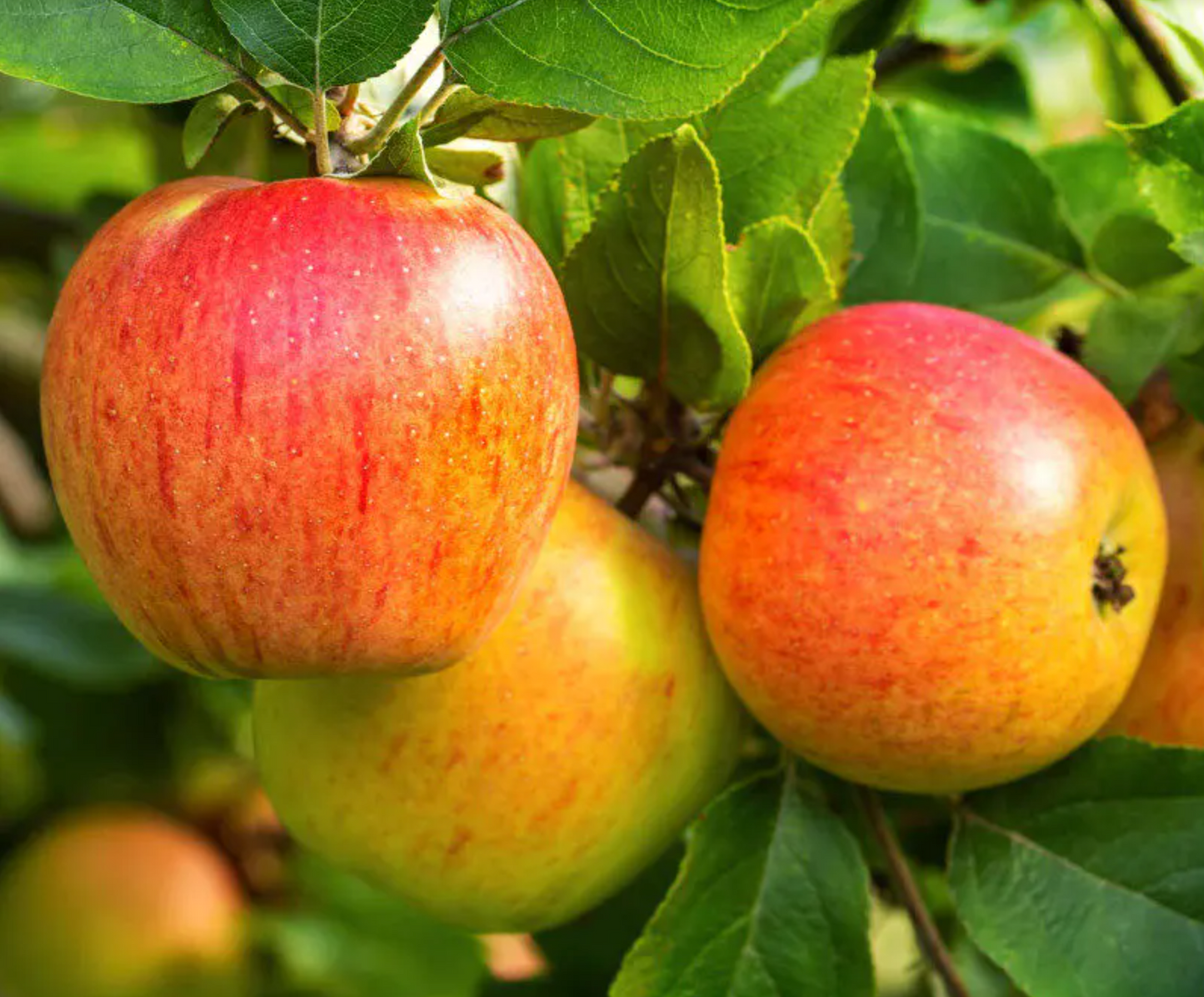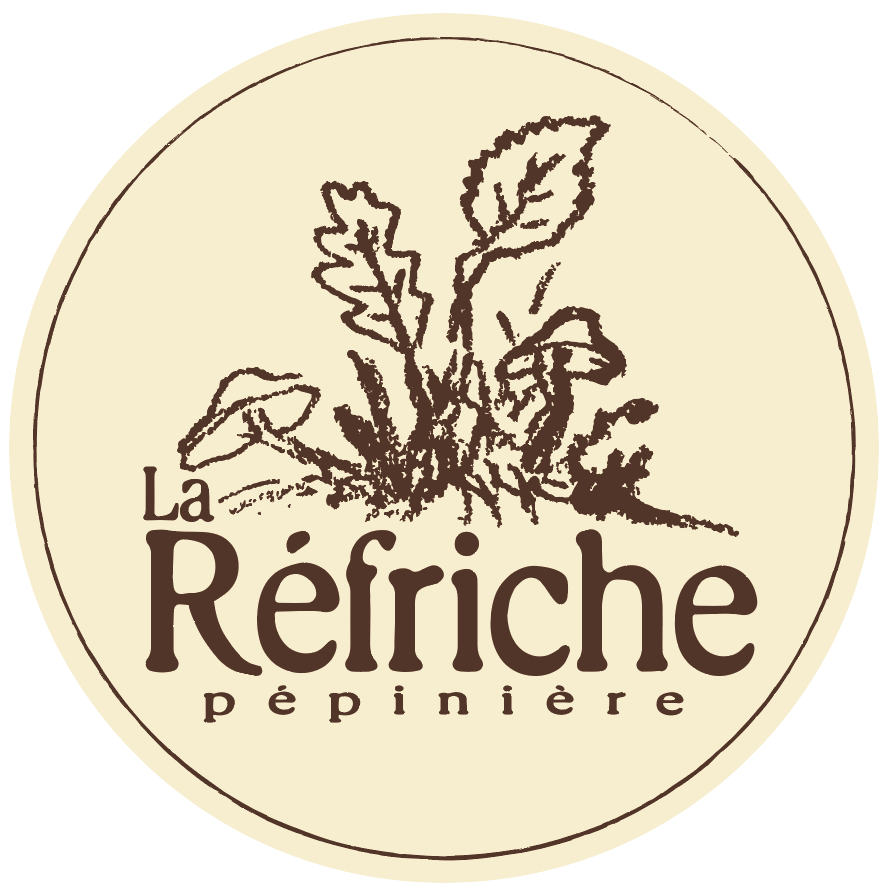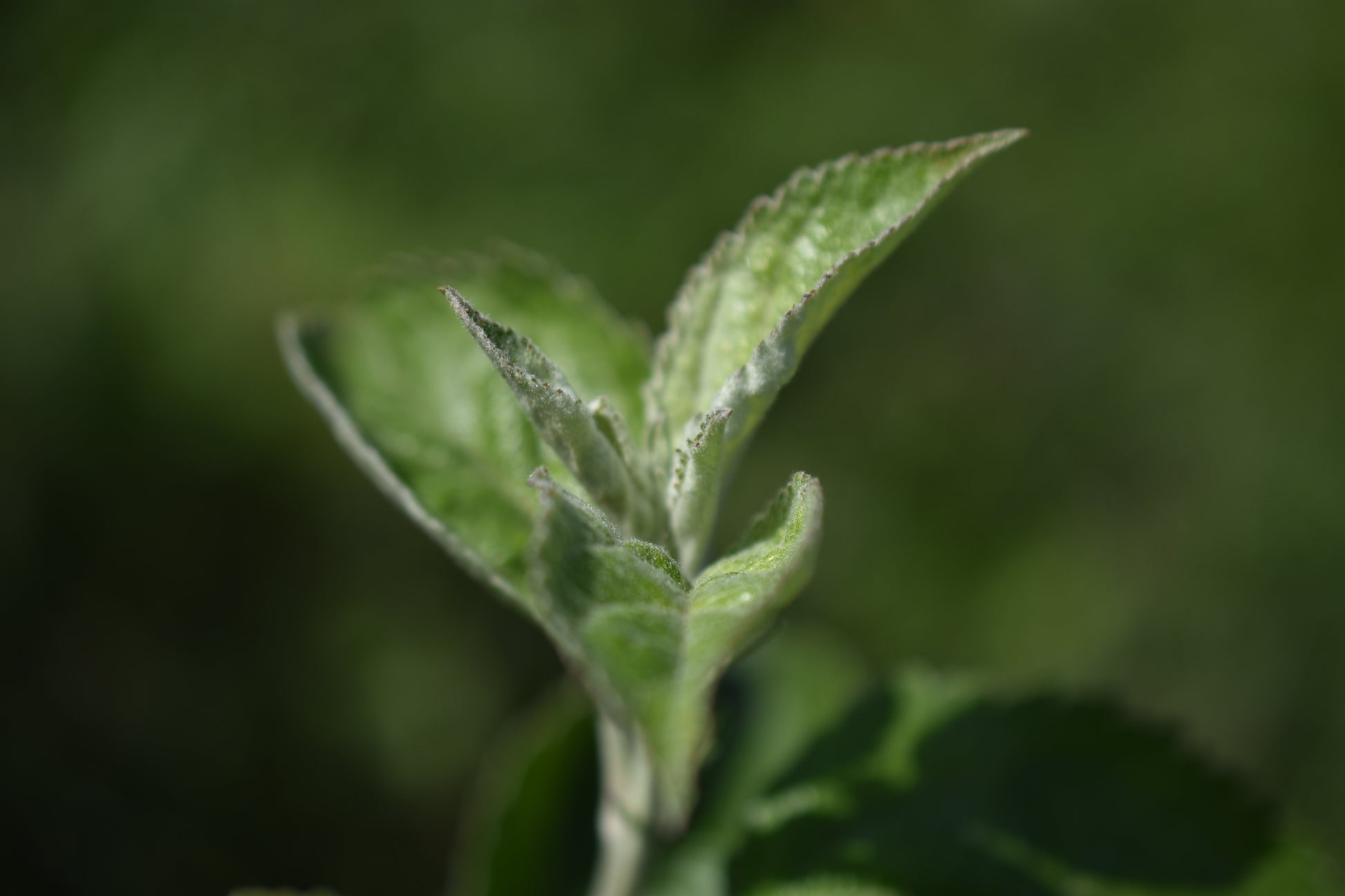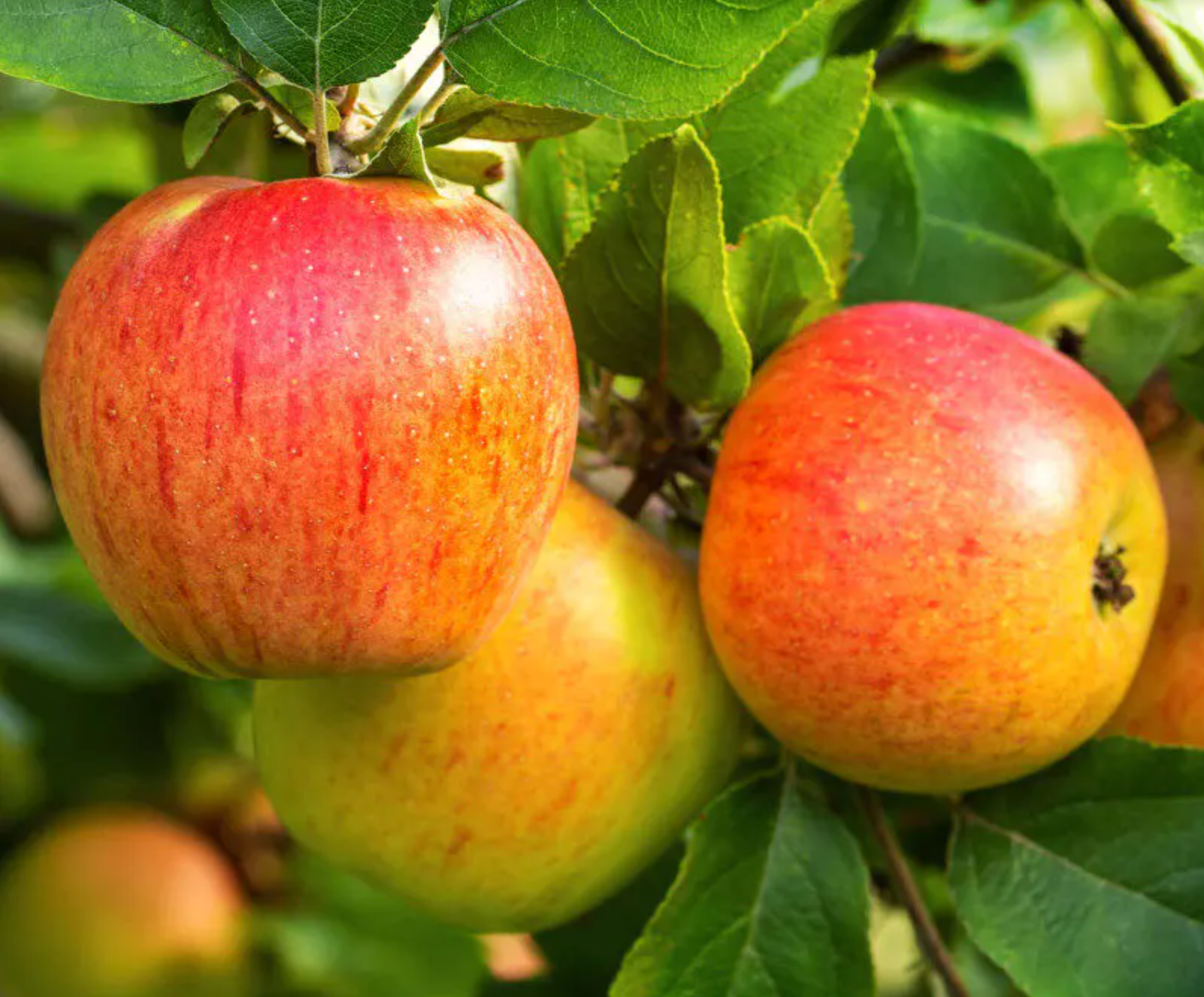Pépinière la Réfriche
Cider apple tree (Malus domestica) - Zone 4
Cider apple tree (Malus domestica) - Zone 4
Couldn't load pickup availability
Malus domestica ‘Banane amère’ - A Quebec-grown cider apple classified as “bitter” according to French classifications or “Full Bittersweet” according to English classifications, ‘Banane amère’ is an excellent apple for adding bitterness to ciders made from blends of dessert apple juices, which are mainly sweet and tart.
Its juice yield when pressed is fairly low, but perfectly sufficient, as it is to be used sparingly in the recipe. This apple is small to medium in size and greenish in color, tending towards red.
The tree is very hardy, moderately susceptible to scab, a fungus that affects the skin of the apple but has no impact on the taste, and produces late apples from late September to early October. This variety shows some susceptibility to fire blight when grown in warmer regions (zone 5b).
Malus domestica ‘Bulmer's Norman’ - A “bittersweet” cider apple ready to harvest from mid-September to mid-October. Its apples are medium to large and yellow in color with a green tinge. Its taste is slightly tart, moderately sweet, and slightly bitter, making it a very good apple for balancing the acidity of cider and bringing out the “tannic” flavors.
This variety grows vigorously and is resistant to fire blight, mildew, scab, and brown rot. Like most apple trees, it tends to alternate, producing a large quantity of apples every other year.
Malus domestica ‘Douce de Charlevoix’ - A “bittersweet” cider apple ready for harvest in mid-September in zone 4b. It ripens in late August in warmer regions, making it more suitable for zone 4 than zone 5. Trials are currently underway in zone 3 to assess its productivity and cold hardiness in this climate zone.
It has a high juice yield when pressed and is useful in blends with semi-acidic/semi-sweet apples such as Lobo, Bilodeau, and Paulared. The apples are medium-sized and greenish with orange-red streaks. The tree is hardy, vigorous, and not very susceptible to scab and fire blight.
Malus domestica ‘Reine des pommes’ - A variety of cider apple ranging from “bittersweet” to “bitter” used in Breton ciders. Its apples are fairly small and have a fairly strong flavor of dark fruit (think blue grapes, blackberries, black plums, blackcurrants, and figs) and honey. Being very aromatic and very astringent, this variety is sought after for making full-bodied end-of-season ciders. The apples are harvested at the end of the season and remain on the tree. It is recommended to place a tarp on the ground and shake the tree to harvest them.
The tree is vigorous and produces a generous alternating crop, but is somewhat susceptible to scab, fire blight, and mildew.
Biotope
Biotope
Les pommiers doivent être implantés dans des sols profonds (au moins 65 cm) et bien drainés avec un pH légèrement acide (6,5) et une exposition en plein soleil.
Taille et port
Taille et port
Actuellement, tous les pommiers que nous produisons sont de pleine grandeur et de pleine longévité. Les pommiers standards, dotés d'un système racinaire plus établi, offrirons une plus grande résilience face aux épisodes de sécheresse qui seront plus fréquents en raison des changements climatiques.
Après 20 ans, ces pommiers feront jusqu'à 6 m de haut et 4,5 m de large. Cela dit, si le pommier se rend jusqu'à la centaine d'années, il se peut que celui-ci soit rendu 10m de haut par 9m de large. Ce faisant, nous vous recommandons de les espacer à 10 m de distance.
La taille et le port des pommiers varie en fonction de l'individu greffé. En attendant nos fiches détaillées sur chacun des pommiers que nous offrons, nous vous recommandons d'effectuer une recherche internet.
Pollinisation
Pollinisation
Autostérile et pollinisé par les insectes. Il faut accompagner un pommier d'un autre pommier de variété différente pour obtenir des fruits.
Source
Source
Ces variétés de pommes à cidre nous ont été recommandées par Gatson Picoulet et Marianne Adam des Pommes Perdues.
Share
